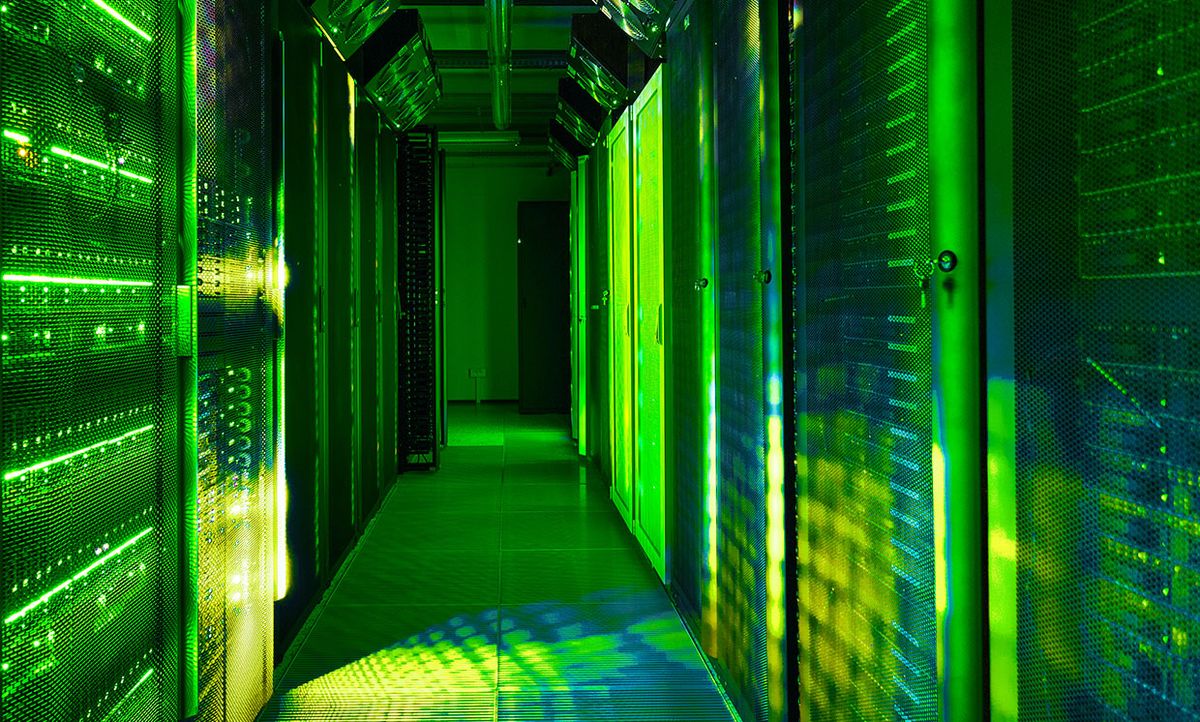A new data center industry report reveals that there’s a long way to go before anyone can claim the sector is in any way “green.” By one standard, just 12 percent of the data centers the report’s authors surveyed are either markedly efficient, or sustainable or, yes, green.
The report, assembled by officials at the IT company SuperMicro, considered what it called “power effectiveness” as a standard for judging a data center’s sustainability. (Michael McNerney, SuperMicro vice president of marketing and network security, noted that the survey did not factor in a center’s power usage effectiveness or PUE score. That figure is calculated by dividing the facility’s total energy use by the amount of energy consumed by its IT equipment.)
By the report’s standards, a data center’s power effectiveness was based on a two primary factors: its power density per rack (higher numbers are better) and its reliance on ambient air cooling.
“Instead of just calling your HVAC vendor to get a new air conditioning [unit], there are ways to run these data centers a little hotter and reduce the power cooling cost,” McNerney said. “Systems are becoming more efficient, more reliable, and can run at higher temperatures.”
The report notes that a data center achieves an additional 4–5 percent energy savings for every 0.56 degree Celcius (1 degree Fahrenheit) by which it allows its server inlet temperatures to increase.
So a small data center that had previously air conditioned its servers down to between 21- and 24 ºC would stand to save more than US $6000 per rack in annual operating expenses by letting the mercury climb to between 25- and 28 ºC. The savings climbs further, to more than $12,500 per rack data center operators allow the operating temperature to rise as high as 32º C.
Another 10- to 20-percent savings off the top could be extracted, McNerney said, by consolidating power and cooling infrastructure. This can be achieved with a single central cooling unit and a single power supply serving the entire center, rather than individual power supplies and fans dedicated to each rack or row.
The final component in assessing a data center’s green score, McNerney said, had more mitigating factors pulling in multiple directions.
“If you leave a server in place longer, you [generate] less e-waste,” McNerney said. “The flipside of that is old servers aren’t necessarily more efficient.”
Of course, refreshing only certain components of a server—for instance, its CPU cores, whose speed and efficiencies tend to increase faster than the rest of a server blade—can be part of the answer.
On average, survey respondents refreshed their servers every 4.1 years. The Intel x86 architecture roadmap calls for generational efficiency and speed improvements every two to two-and-a-half years. On the other hand, power supplies, cooling, storage and of course a server’s physical chassis don’t need refreshing nearly as promptly.
McNerney says many survey respondents found that software licensing costs, which are typically priced per core, are a key driver of server update timing. (A faster core can of course provide a better return on every software license dollar than can an older, slower core.)
“We really wanted to highlight that data centers going down this green route can actually save money—operation cost, acquisition cost,” he said. “We need to move this from a corporate charity discussion to ‘Clean up the data center and save a bunch of money while you’re doing it.’”
The SuperMicro report gathered 1,362 survey responses from a worldwide assortment of data center operators and affiliated IT professionals. The respondents were mostly companies whose data centers were based in North America (79 percent), although 32 percent and 22 percent also operated data centers in Europe/Africa and Asia, respectively.
Margo Anderson is the news manager at IEEE Spectrum. She has a bachelor’s degree in physics and a master’s degree in astrophysics.



